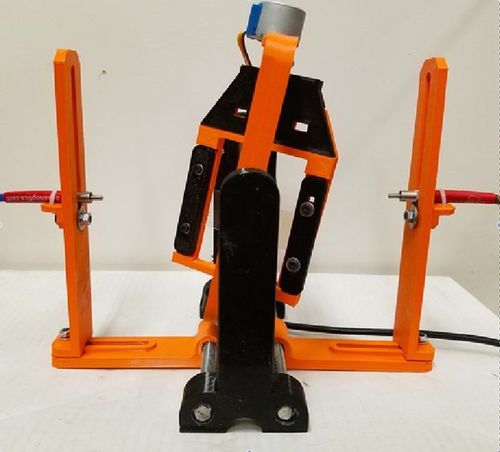3-D printable open source dual axis gimbal system for optoelectronic measurements

|
By Michigan Tech's Open Sustainability Technology Lab.
Wanted: Students to make a distributed future with solar-powered open-source RepRap 3-D printing and recyclebot recycling. |

|
Contents
Source
- Nupur Bihari, Smruti Prasad Dash, Karankumar C. Dhankani, Joshua M. Pearce. 3-D printable open source dual axis gimbal system for optoelectronic measurements. Mechatronics 56, 175-187 (2018). DOI: https://doi.org/10.1016/j.mechatronics.2018.07.005 open access
- Repository contains all source code, paper contains instructions
- Quick download of stls []
- mastercad assembly - https://github.com/goscommons/Dual-Axis-Gimbal-System
Highlights
- Low-cost 3-D printable open source dual axis gimbal system is presented.
- Arduino based microcontroller used to move over two degrees of freedom.
- Had unidirectional accuracy of 2.827°, repeatability of 1.585°, backlash error of 1.237°.
- Maximum speed of 35.156° per second and a verifiable microstep size of 0.33°.
- 96% cost in savings as compared to the least expensive commercial variant.
Abstract
Simple 3-D printable open source hardware designs have proven to be effective scientific instruments at low costs. Further development in this area is coupling open source electronics with 3-D printable mechanical components to make fully functional distributedly-manufactured mechatronic tools for science. One research area where such low-cost technology is needed is to characterize thin film anti-reflective coatings and transparent conducting oxides (TCOs) for the glass, mirror and solar photovoltaic industry whose transmission properties are angle dependent. To meet this research need a low-cost 3-D printable open source dual axis gimbal system is presented in this study. An Arduino based microcontroller is used to move the sample holder to the user specified angle where two stepper motors control the motion providing two degrees of freedom. The sample holder is made in such a way that samples can easily be mounted on it by two movable latches. The system was validated and characterized for: i) unidirectional accuracy, ii) repeatability, iii) backlash, iv) speed resolution and v) microstep size. Finally, the mechatronic system is tested for the intended application using a halogen light source and a spectrometer to measure transmission through glass TCO samples through a hemisphere. The system performed as expected has a unidirectional accuracy of 2.827°, repeatability of 1.585°, backlash error of 1.237°, maximum speed of 35.156° and a verifiable microstep size of 0.33°. Despite the highest mean squared errors, the open source gimbal system performed adequately while measuring transmission of radiation through glass with TCO coatings. This open source system also represents a 96% cost in savings as compared to the least expensive commercial variant. The high mean squared errors are offset by the cost of the system coupled with its open source nature that promotes further collaboration and hence, development.
Keywords
open source hardware; Gimbal system; 3-D printing; Rotator; Optoelectronics; Transmittance; FOSH; open hardware
